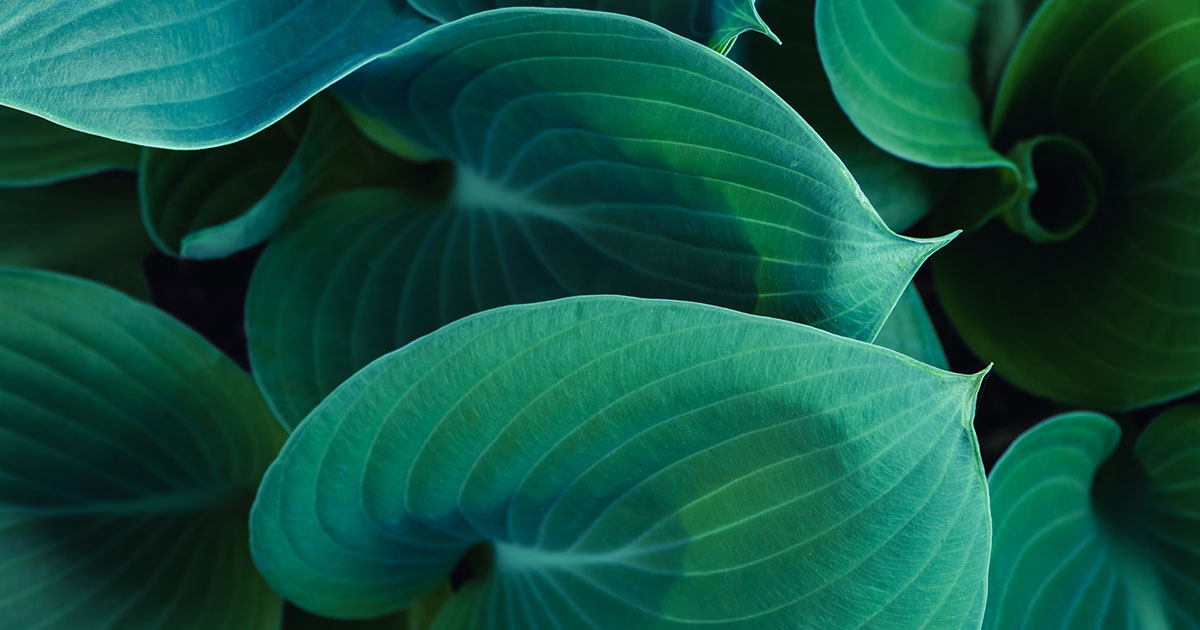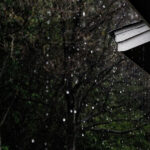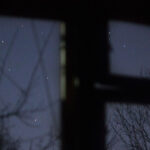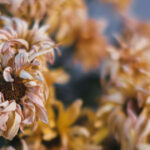THOMAS A. THRUN
★ ★ ★ ★
FLASH FICTION

Image by Greg Rosenke
‘Hostas for you, my friend, and me’
While He rested on the seventh day, God realized he’d forgotten to create hostas.
“And these, too, are good,” He observed, “as mankind and I need only something peaceful to look at while we rest, something that will not require a lot of watering, special light nor any kind of fancy pruning or attention, something that will bloom in July and then keep on blooming well into August …in spite of how much man and woman may neglect it.”
So God created the hosta plant, which blooms special for bumble bees after the fickle, fragile tulips and day lilies have wilted and dried up.
I, myself, speculate that God created hostas for the common man and woman, ordinary folk without green thumbs, people like you and me who tend now to lead lives of quiet desperation (quoting Thoreau) and who need only to look out each day at a humble hosta to find a certain inner peace, a momentary stay against confusion, if you will, to remind us that He may actually exist somewhere in the cosmos and may even care about all of us, His Creation – including you and me.
Or maybe God created hostas to give hope. But in these pandemic days, I’m more inclined to think they just evolved. I hesitate to be too hopeful right now. Yet I must confess that I am glad that I am me and you are you … and that we and hostas are what we and they are meant to be, separate in our fragile earthly togetherness, and nothing more or less.
Robert Frost, in A Tuft of Flowers, wrote of a man mowing hay by hand with a scythe, sparing a tuft of flowers because the blooms had touched his soul, not even suspecting that someone else might come along later that same day to turn the hay, and that they also might see them and feel the same way. So, if my humble hostas also have touched your soul today, my friend, I am touched, too.
When you plant a hosta or sing a song, you hope that perhaps someone sees or hears. But it’s okay if no one ever does … if the hosta only speaks or sings to you.
A hosta by your doorstep is like a porch light left on to welcome you home at the end of a very long day! If it also brightens the day of another, perhaps the postman or an old friend looking to find your home, you will have spread your hope, perhaps unknowingly. There is always hope, or so they say.
So, hostas survive in spite of what we may do to them! Yes, you can dig up and separate hostas even late in the summer! Leave some of the dirt around the roots as you transplant the clump into a new hole. Pack dirt around the root clump, and give it a good drink of water. That’s it! If you do nothing more, it should survive in spite of you!
After the first killing frost late in September or early October, cut off the leaves when they are brown and lying flat on the ground, if you want. No worries, if you don’t. Next spring, your hostas will sprout, and they will flourish as days lengthen and nights warm. They will be beautiful and hopeful again …as perhaps we are more hopeful in Spring again, too.
And dare I say, even more beautiful when they finally mid-summer bloom …as beautiful as you! Yes, my friend, your smile and eyes shine even on the cloudiest of days! Would I say this, if it were not true?
After another year or two, you will be able to split your hosta clumps again and spread more hope yourself. God, if He exists, would approve of that and say it’s good.
Let me know, my friend, if and when you need more hostas. I’ll be right over.
I’m good at digging holes.

Thomas A. Thrun, a former weekly newspaper editor in Wisconsin and Washington State, has returned to his writing in his retirement. His poetry is heavily influenced by his Wisconsin farming heritage and Robert Frost’s works. Thrun has been published in several Wisconsin and on-line anthologies and just had a poem included 2022 Wisconsin Poets’ Calendar.
























0 Comments